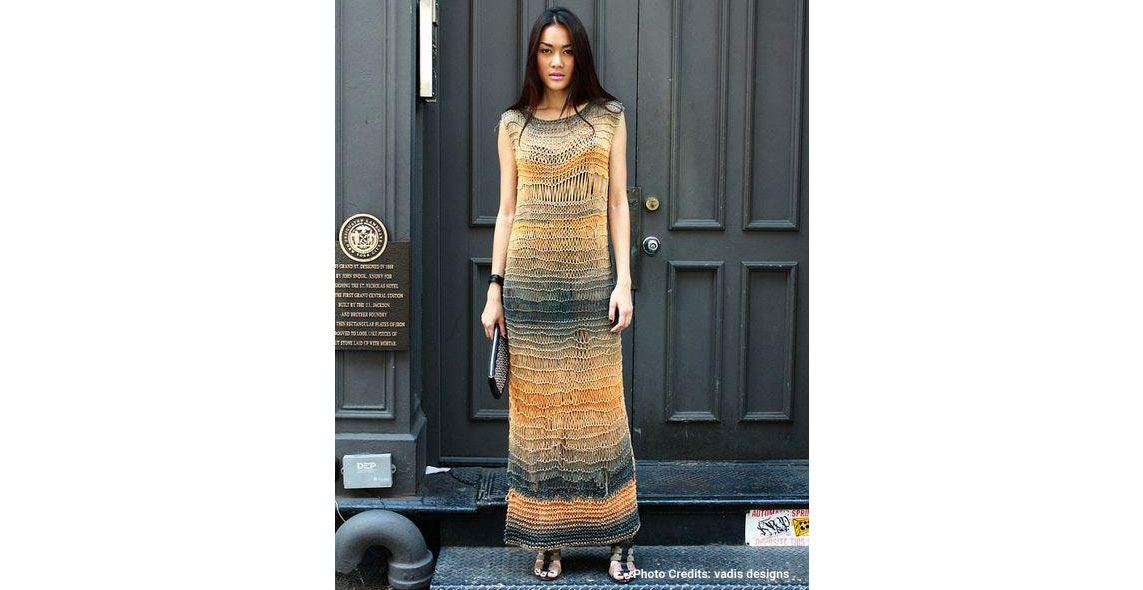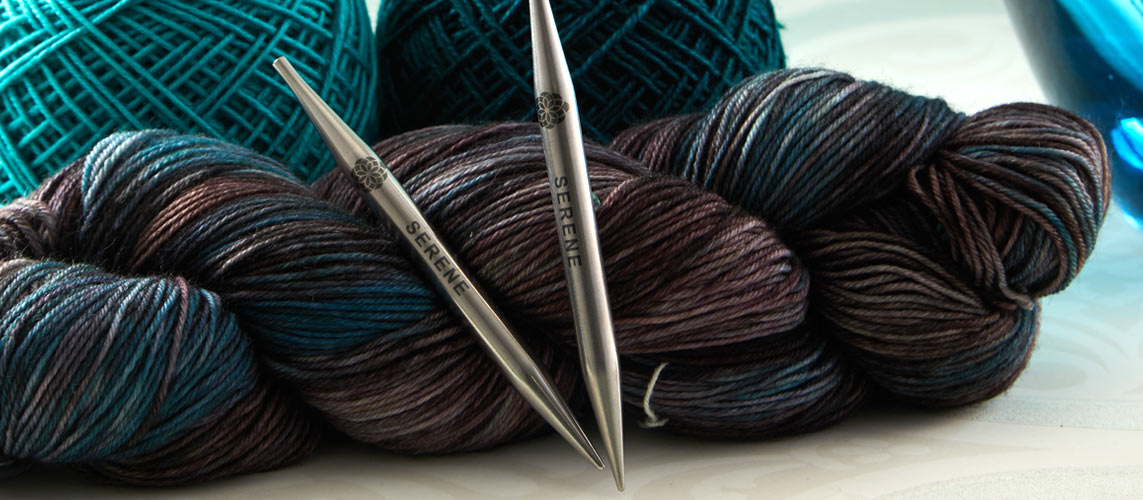If you're looking to wield the magic of your knitting needles for an easy-to-learn knitting technique, try Condo knitting. This captivating vintage trend from the 1970s has found its way back into the spotlight, gracing international runways with its whimsical charm and adding a touch of bohemian flair to spring and summer wardrobes.
Condo knitting stands for net-like, lacy patterns that spark your creativity and open endless possibilities. Since its invention, this technique has gained popularity among knitters for its simplicity and versatility, making it a go-to technique for creating airy and lightweight garments perfect for spring and summer. It can be applied to casual shawls, t-shirts, tops, and light jumpers. Add a unique twist to your knitting repertoire and explore this exciting technique with us.

Understanding Condo Knitting
The term "Condo knitting" originated in the 1970s and is believed to have been coined by Elizabeth Zimmermann, a renowned knitting designer and author. The name "Condo knitting" is derived from the idea that the knitted fabric resembles a condominium complex, with its interconnecting spaces and open structure. The name not only captures the visual resemblance of the knitted fabric to a condominium but also conveys the idea of exploring different spaces and possibilities within the knitting technique itself. Just as a condominium complex offers various living spaces and opportunities for customization, Condo knitting allows knitters to experiment with different needle sizes and create diverse patterns and textures.
The remarkable aspect of Condo knitting is there is no particular technique involved; you just use two different needle sizes to achieve its unique texture. So use your imagination and get comfortable: Whether you prefer knitting in rows or rounds does not matter. If you're knitting in rows, all you need to know is the garter stitch. When knitting on circular needles, you'll alternate between knitting and purling your rounds. The key is switching regularly between two needle sizes; this way, you create a series of visually stunning effects ranging from subtle and stable edges to bold and intricate patterns.
How to get started with Condo Knitting
To begin, cast on any number of stitches on preferably small-sized knitting needles using the needle size appropriate for your chosen yarn weight. Condo knitting works with any needle type - you can use straight needles for flat pieces, or circular or double-pointed knitting needles for seamless garments.
Row 1: Employ the smaller, equally-sized needles to knit each stitch, until you have a stable edge.
Row 2: Utilize a larger-sized needle to knit every stitch. As you continue adding rows, using the large needle will become more convenient. Ensure that your stitches are loose enough to accommodate the large needle.
Repeat Row 1 and Row 2 while alternating between needle sizes.
You can also gradually up the size of your needles, thus creating an intriguing gradient lace structure in your item. Wherever you desire a more stable edge or brim, knit a few rows with the smaller needle size. The initial row knit with the smaller needle may feel tight, but you'll quickly notice the loose, net-like pattern it creates the bigger the needles you use. From there, continue knitting with the larger needle, incorporating the smaller needle as needed to provide stability.
To finish, complete your final row with the small needle and then bind off using the small, matching needles. Once you gain proficiency in condo knitting, you might find it effortless to modify some of your existing patterns to include this fashionable stitch, perhaps all over, or perhaps just as an eye-catcher.
One of the most appealing aspects of Condo knitting is its simplicity. With this technique, you can create boho-inspired patterns without complicated charts or stitch counts. The Condo technique pairs well with therapeutic and mindful knitting, allowing you to immerse yourself in the rhythmic flow of your needles while watching your unique design emerge.
Condo-knitting with different Yarn Weights
One of the most captivating aspects of Condo knitting is the opportunity to experiment with different yarn weights and create dynamic effects. By combining yarns of varying thicknesses, you can add depth and texture to your Condo knitting projects.
Mixing different yarn weights allows you to play with contrast, colours and create unique patterns within your lacy fabric. For example, pairing a bulky yarn with a finer yarn can result in striking variations in stitch size, adding a dramatic dimension to your work. You can alternate between the two yarns to create sections of density and airiness, giving your Condo knitting an eye-catching appeal.
There is, however, one downside to Condo knitting: its loose and lacy nature may result in some sagging if you exaggerate the technique. Sometimes designers aim at achieving a slouchy effect, but you can easily avoid it if you wish. Just choose overall lightweight yarns like summer mohair, finely spun wool, or cotton and design wearables that complement the airy texture of the technique.
We hope the net-like patterns and endless design possibilities of Condo knitting have captivated your creative spirit and you give this technique a try. Are you ready to embark on a summer knitting adventure filled with breezy, bohemian vibes?












